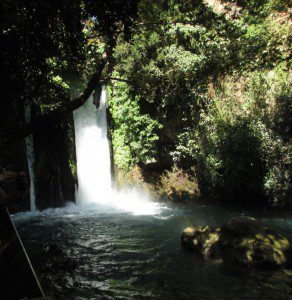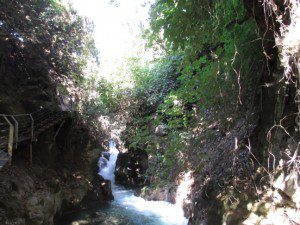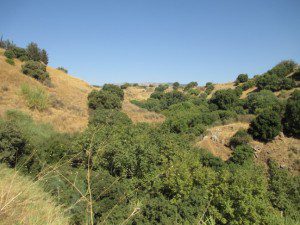 The next chapter of Mark Harris’s new book The Nature of Creation looks at the theological significance of the relationship between creation and creator. In particular he considers two aspects of the creative activity – creation from nothing and continuous creation – and what these tell us about the nature of God. Harris also looks at the coherence between modern science and these two aspects of God’s creative activity.
The next chapter of Mark Harris’s new book The Nature of Creation looks at the theological significance of the relationship between creation and creator. In particular he considers two aspects of the creative activity – creation from nothing and continuous creation – and what these tell us about the nature of God. Harris also looks at the coherence between modern science and these two aspects of God’s creative activity.
Creation from Nothing or creatio ex nihilo is a Christian doctrine of long standing. The theological significance is important: God is neither dependent on the world nor necessarily a part of it, with the corollary that the world is necessarily dependent on God for its existence. This is a cornerstone in a theistic understanding of God.
God both created the world at the beginning of time ex nihilo, and continues to support and uphold (or sustain) it, and is active in it. Since the world was dependent upon God for its existence in the first place (“In the beginning”), it continues to be dependent upon God for its continues existence; it is contingent in the widest possible sense. In fact, if God is said not to sustain the world in every moment of its existence, then this suggests that the world exists by means of its own power and is in a sense equal to God. The theological position of creatio ex nihilo is therefore not only relevant for how things began, but for how they continue to be. In short, creatio ex nihilo is not an explanation of “In the beginning” so much as a statement that there is an ongoing relationship between the created world and its Creator. (p. 112)
God’s transcendence is connected to the concept of creation from nothing. While God is not (necessarily) outside of time and space, God is not constrained by time and space. God is omnipresent and it is God who prevents a fall back into nothingness.
This is distinct from the claim of deism which attributes the initiation of the universe to a divine action but then essentially removes God from the picture, relegating his activity (if any) to a purely spiritual realm. Harris is emphatic on this distinction because we, raised in an era of scientific exploration and explanation, are quick to separate natural and supernatural as though God was responsible for one and not the other, and then to explain away or deny supernatural action. This is not the orthodox, theistic, understanding of God’s action.
 Continuous Creation or creatio continua is related to the idea that God is not only transcendent, but also immanent. God supports, sustains, and preserves the world and is also active in an ongoing creative sense.
Continuous Creation or creatio continua is related to the idea that God is not only transcendent, but also immanent. God supports, sustains, and preserves the world and is also active in an ongoing creative sense.
Rather, creatio continua suggests that the creative work is constantly ongoing in order to reveal the world’s full potential, which is perpetually novel and fresh. … God’s immanence is seen in the creative work of the Holy Spirit (e.g. Ps 104:30). (p. 116)
These to aspects of God’s creative activity are not mutually exclusive and both are required in some sense to understand both the present world and the world to come (new creation).
 Science and Creation. Now it is tempting to equate the Big Bang with creatio ex nihilo and cosmological and biological evolution with creatio continua, and this is not entirely wrong. Nor is it entirely correct. The Big Bang isn’t quite creation from nothing. At the very least there are laws of physics describing the quantum fluctuation that resulted in the emergence of our universe. There could also be many universes (multiverse), or a prior universe from which ours arose. While Harris (and I) would hold that evolution (both cosmological and biological) is a manifestation of creatio continua, it is important not to limit God’s creative action in the world to this alone. God is active in a far broader sphere, including ordinary life and human history. It is also important that we not classify creatio ex nihilo as “supernatural” and creatio continua as “natural,” placing one within the realm of scientific study and the other outside this realm.
Science and Creation. Now it is tempting to equate the Big Bang with creatio ex nihilo and cosmological and biological evolution with creatio continua, and this is not entirely wrong. Nor is it entirely correct. The Big Bang isn’t quite creation from nothing. At the very least there are laws of physics describing the quantum fluctuation that resulted in the emergence of our universe. There could also be many universes (multiverse), or a prior universe from which ours arose. While Harris (and I) would hold that evolution (both cosmological and biological) is a manifestation of creatio continua, it is important not to limit God’s creative action in the world to this alone. God is active in a far broader sphere, including ordinary life and human history. It is also important that we not classify creatio ex nihilo as “supernatural” and creatio continua as “natural,” placing one within the realm of scientific study and the other outside this realm.
Both categories then, ex nihilo and continua, are fundamentally theological at the end of the day: they both describe God’s creative work, one as immanent and the other as transcendent. … The two categories complement each other, describing how God is both present in creation and transcendent with respect to it. And it hardly needs saying that this is the traditional solution known as theism. (p. 120)
 Scripture and Creation. Both creatio ex nihilo and creatio continua find support in the Bible, although neither can be simply proof-texted from scripture. According to Harris (and others) the Bible makes no clear statement of creation from nothing. It does make rather clear statements about God as transcendent over creation. Genesis 1:1-2 is often cited, but this isn’t an unambiguous translation:
Scripture and Creation. Both creatio ex nihilo and creatio continua find support in the Bible, although neither can be simply proof-texted from scripture. According to Harris (and others) the Bible makes no clear statement of creation from nothing. It does make rather clear statements about God as transcendent over creation. Genesis 1:1-2 is often cited, but this isn’t an unambiguous translation:
In the beginning God created the heavens and the earth. Now the earth was formless and empty, darkness was over the surface of the deep, and the Spirit of God was hovering over the waters. (NIV)
In the beginning when God created the heavens and the earth, the earth was a formless void and darkness covered the face of the deep, while a wind from God swept over the face of the waters. (NRSV)
The NIV translation is possible, but so is the NRSV. It is not wise to put too much weight on the passage as a defense of creatio ex nihilo. In the NRSV translation the sense is that God is forming something out of chaos, introducing order and function. The same is true in the NIV translation – except that here God first creates the chaos. Harris finds the NRSV more likely because it doesn’t seem likely that the author would have intended to make God responsible for the chaos of “formless and void” (tohu wabohu).
There might be no unambiguous statement which says that before creation existed there was nothing but God, but there are many which are compatible with the idea which stands behind creatio ex nihilo, that God is utterly transcendent. After all, the biblical creation motif unfailingly sees God as the root and basis for all that exists and continues to exist, which is what “from nothing” means. We also see – on almost ever page of the Bible – the corollary of God’s transcendence: the idea that creation, and especially God’s people, are utterly dependent upon God, (p. 122)
 An apparent proof-text for creatio continua doesn’t immediately leap to mind the way Genesis 1:1 does for creatio ex nihilo. However, many passages speak to God’s divine action. Harris points to Job 38-41 and Psalm 104 as possibles, and to Psalm 139 among others. These are passages that speak to God’s immanence and involvement in the ongoing processes of the world. The outpouring of the Holy Spirit and God’s role in preparing the way for new creation are important examples from the New Testament. God isn’t simply letting the world move on a deterministic path to obliteration or perfection. There is uncertainty and all is contingent on God.
An apparent proof-text for creatio continua doesn’t immediately leap to mind the way Genesis 1:1 does for creatio ex nihilo. However, many passages speak to God’s divine action. Harris points to Job 38-41 and Psalm 104 as possibles, and to Psalm 139 among others. These are passages that speak to God’s immanence and involvement in the ongoing processes of the world. The outpouring of the Holy Spirit and God’s role in preparing the way for new creation are important examples from the New Testament. God isn’t simply letting the world move on a deterministic path to obliteration or perfection. There is uncertainty and all is contingent on God.
Creation isn’t just a one time act. God as Creator is an ongoing truth – transcendent and immanent.
Where or how does the Bible teach creation from nothing?
Is continuous creation also taught in the Bible?
What might this mean for the way we think about the relationship between science and Christian faith?
 The pictures in this post, by the way, are of God’s wondrous creation along the Banias or Hermon stream just below the ancient city of Caesarea Philippi (Mark 8:27; Matt. 16:13) about 25 miles north of the Sea of Galilee (Lake Kinneret). This stream joins the Dan which also originates at the base of Mount Hermon and is one of the four streams that form the headwaters of the Jordan River. It was a marvelous hike with wild figs, long grasses, woodland, and rushing water.
The pictures in this post, by the way, are of God’s wondrous creation along the Banias or Hermon stream just below the ancient city of Caesarea Philippi (Mark 8:27; Matt. 16:13) about 25 miles north of the Sea of Galilee (Lake Kinneret). This stream joins the Dan which also originates at the base of Mount Hermon and is one of the four streams that form the headwaters of the Jordan River. It was a marvelous hike with wild figs, long grasses, woodland, and rushing water.
If you wish to contact me, you may do so at rjs4mail[at]att.net.
If interested you can subscribe to a full text feed of my posts at Musings on Science and Theology.











